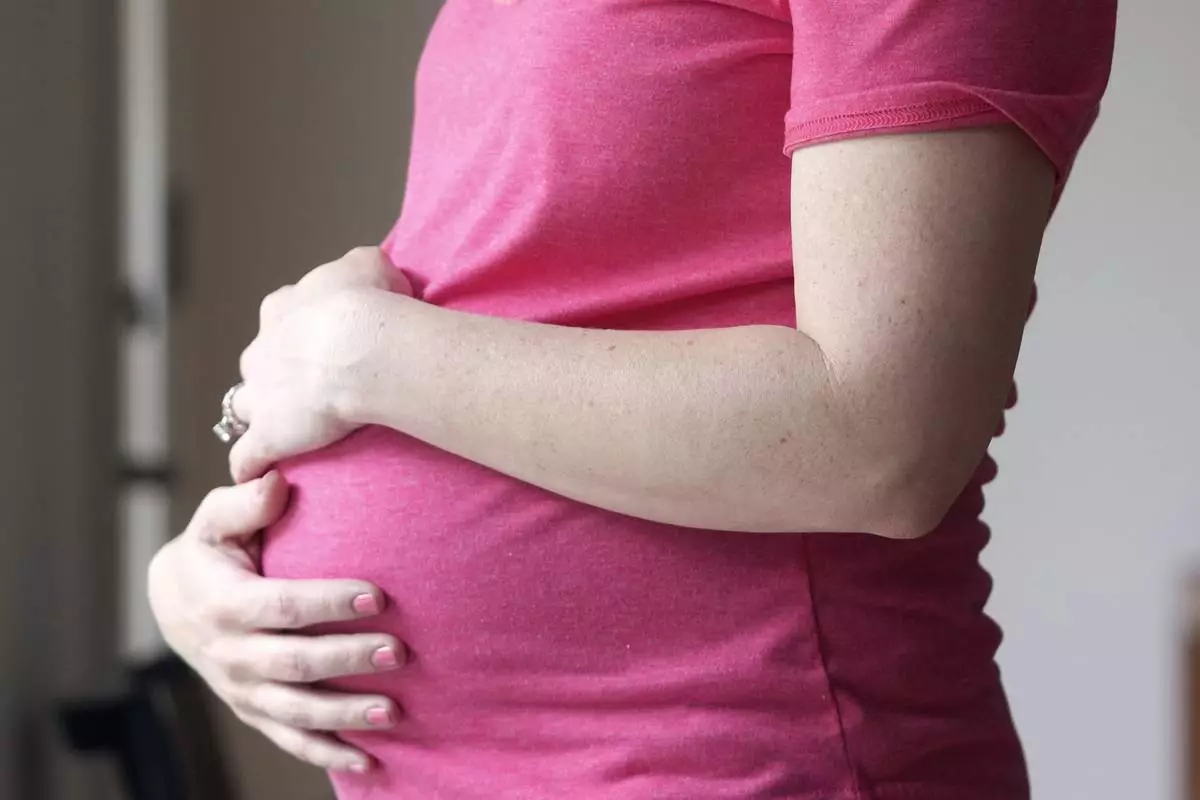A Missouri death row inmate who has received last-minute reprieves twice before over concerns about a rare medical condition is now scheduled to die in October.
The Missouri Supreme Court on Tuesday set an Oct. 1 execution date for Russell Bucklew, who was convicted in the 1996 shooting death of a man who was living with Bucklew's former girlfriend.
Bucklew narrowly escaped execution in 2014 and again in 2018. Each time, the U.S. Supreme Court intervened moments before Bucklew was scheduled to be put to death.
His ailment, cavernous hemangioma, causes blood-filled tumors to grow in his head, neck and throat. Bucklew has argued that the throat tumor could burst during the execution, causing him to choke on his own blood.
The U.S. Supreme Court ruled 5-4 in April that the state could move ahead with the execution. The court's five conservative justices rejected Bucklew's argument that subjecting him to lethal injection would violate the Constitution's ban on cruel and unusual punishment.
Justice Neil Gorsuch wrote that Bucklew's claim "isn't supported by either the law or the evidence."
Justice Stephen Breyer wrote in a dissenting opinion that his colleagues acknowledged that the Constitution's Eighth Amendment prohibits states from executing prisoners by "horrid modes of torture" such as burning at the stake.
"But the majority's decision permits a state to execute a prisoner who suffers from a medical condition that would render his execution no less painful," Breyer wrote.
Bucklew's attorney, Cheryl Pilate, did not immediately respond to phone and email messages seeking comment. She has said previously that Bucklew's condition, in addition to the tumors, causes weakened and malformed blood vessels and vein problems.
Missouri uses an injection of the drug pentobarbital for executions. Bucklew had proposed that the state execute him by having him breathe pure nitrogen gas through a mask. Missouri officials said no state has ever carried out an execution as Bucklew suggested.
Bucklew, now 51, was convicted of killing Michael Sanders. After entering a trailer where Sanders and Bucklew's former girlfriend lived with their children, Bucklew fatally shot Sanders and later raped his former girlfriend. Bucklew was arrested after a car chase and shootout with police.
The execution would be the first in Missouri since Mark Christeson was put to death in January 2017. None of the 20 inmates executed since Missouri began using pentobarbital in 2013 have shown obvious signs of pain or suffering.
NEW YORK (AP) — U.S. births fell last year, resuming a long national slide.
A little under 3.6 million babies were born in 2023, according to provisional statistics released Thursday by the Centers for Disease Control and Prevention. That's about 76,000 fewer than the year before and the lowest one-year tally since 1979.
U.S. births were slipping for more than a decade before COVID-19 hit, then dropped 4% from 2019 to 2020. They ticked up for two straight years after that, an increase experts attributed, in part, to pregnancies that couples had put off amid the pandemic's early days.
But “the 2023 numbers seem to indicate that bump is over and we're back to the trends we were in before,” said Nicholas Mark, a University of Wisconsin researcher who studies how social policy and other factors influence health and fertility.
Birth rates have long been falling for teenagers and younger women, but rising for women in their 30s and 40s — a reflection of women pursuing education and careers before trying to start families, experts say. But last year, birth rates fell for all women younger than 40, and were flat for women in their 40s.
Mark called that development surprising and said “there's some evidence that not just postponement is going on.”
Rates fell across almost all racial and ethnic groups.
The numbers released Thursday are based on more than 99.9% of the birth certificates filed in 2023, but they are provisional and the final birth count can change as they are finalized. For example, the provisional 2022 birth count appeared to show a dip, but ended up being higher than 2021's tally when the analysis was completed.
There could be an adjustment to the 2023 data, but it won't be enough to erase the “sizeable” decline seen in the provisional numbers, said the CDC's Brady Hamilton, the new report's first author.
Experts have wondered how births might be affected by the June 2022 U.S. Supreme Court decision that allowed states to ban or restrict abortion. Experts estimate that nearly half of pregnancies are unintended, so limits to abortion access could affect the number of births.
The new report indicates that the decision didn't lead to a national increase in births, but the researchers didn't analyze birth trends in individual states or dissect data among all demographic groups.
The new data does raise the possibility of an impact on teens. The U.S. teen birth rate has been falling decades, but the decline has been less dramatic in recent years, and the drop seems to have stopped for teen girls ages 15 to 17.
“That could be Dobbs,” said Dr. John Santelli, a Columbia University professor of population and family health and pediatrics. Or it could be related to changes in sex education or access to contraception, he added.
Whatever the case, the flattening of birth rates for high school students is worrisome and indicates that “whatever we're doing for kids in middle and high school is faltering,” Santelli said.
More findings from the report:
—From 2022 to 2023, the provisional number of births fell 5% for American Indian and Alaska Native women, 4% for Black women, 3% for white women and 2% for Asian American women. Births rose 1% for Hispanic women.
—The percentage of babies born preterm held about steady.
—The cesarean section birth rate rose again, to 32.4% of births. Some experts worry that C-sections are done more often than medically necessary.
—The U.S. was once among only a few developed countries with a fertility rate that ensured each generation had enough children to replace itself — about 2.1 kids per woman. But it’s been sliding, and in 2023 dropped to about 1.6, the lowest rate on record.
Surveys suggest many U.S. couples would prefer to have two or more kids but see housing, job security and the cost of child care as significant obstacles to having more children.
“There's something getting in the way of them being able to achieve those goals,” Mark said.
The Associated Press Health and Science Department receives support from the Howard Hughes Medical Institute’s Science and Educational Media Group. The AP is solely responsible for all content.

FILE - A pregnant woman stands for a portrait in Dallas, Thursday, May 18, 2023. According to provisional statistics for 2023 released by the Centers for Disease Control and Prevention on Thursday, April 25, 2024, U.S. births fell last year, in a substantial drop marking an apparent end to pandemic-related fluctuations and a return to a long-standing national decline. A little under 3.6 million babies were born in the U.S. last year, about 76,000 fewer than the year before. (AP Photo/LM Otero, File)










